A dedicated runner is searching the web for new sports gear. He finds a brand offering high-performance apparel made from recycled materials. Drawn by their commitment to sustainability, clearly communicated on their website, he chooses eco-friendly running clothes and witnesses that sustainability and excellent customer experience go hand in hand.
That’s right, environmental consciousness is becoming increasingly paramount. Sustainability has become a central aspect of the customer experience (CX). As brands strive to meet the growing demands of eco-conscious consumers, integrating sustainable practices into every touchpoint of the user journey has become essential.
In this article, we’ll share insights into the relationship between consumers, brands, and the environment. Discover key sustainability trends, challenges, and values that resonate with individuals and sports communities. We’ll help you understand how sustainability can be presented in online stores and its impact on the overall customer experience.
Key sustainability trends
Environment in the spotlight
Studies show a growing willingness to pay a premium for eco-friendly products. According to research data, consumers are willing to pay up to 12% more if the products are sold and manufactured in an ecologically friendly and environmentally responsible way.
It highlights the importance of perceived value and aligns with the trend of Gen Z and Millenial consumers valuing ethical labor practices and minimizing environmental impact. This shift demands action from eCommerce brands, who must integrate sustainability into their business models and address these evolving customer needs.
Embracing quality over quantity
The slow fashion movement advocates for consuming less and choosing quality over quantity, contrasting with the fast fashion model of producing cheap, disposable clothing. While price influences sales, quality is crucial for customer satisfaction and loyalty. Enhancing loyalty and retention can create a positive consumer experience and add value to the brand.
By 2025, consumers will prioritize quality over quantity more than ever before. Nearly 39% of shoppers prefer to spend more on expensive, better-quality clothing.
- Emphasis is on timeless designs and durable construction, promoting the quality of the brands and their pieces that last longer
- Slow fashion is not about entirely giving up on new purchases but making thoughtful choices, supporting brands that align with environmental values, and considering the social impact of clothing
But how can integrating sustainability into the business model positively impact the customer experience?
Impact on customer experience
When customers perceive a brand’s commitment to environmental responsibility, it enhances brand image and fosters customer loyalty. This focus resonates deeply with environmentally conscious consumers, leading to increased engagement and satisfaction.
An authentic commitment to sustainability can also generate positive word-of-mouth marketing.
Challenges when introducing sustainability
Introducing sustainability in sports clothing eCommerce presents several challenges that brands must navigate to meet consumer expectations and build trust effectively. Here are the key challenges:
- Balancing transparency with greenwashing concerns
- Educating consumers about sustainable practices and product features
- Offering competitively priced eco-friendly options
1. Balancing transparency with greenwashing concerns
Consumers are increasingly skeptical of brands that make broad, unsubstantiated claims about their environmental efforts. To avoid being perceived as disingenuous, companies must provide clear, verifiable information about their sustainable practices. They must also be honest about their sustainability journey, including achievements and areas for improvement, to build and maintain consumer trust.
2. Educating consumers about sustainable practices
Many consumers are interested in sustainable products but lack the knowledge to make informed choices. Brands need to effectively educate their audience about the benefits and features of sustainable sports clothing. Clear communication is essential, such as explaining the environmental advantages of recycled fabrics, the importance of fair labor practices, and how these choices impact the planet.
3. Offering competitively priced options
Eco-friendly products often have higher production costs due to the use of sustainable materials and ethical manufacturing processes, making it difficult for brands to offer them at competitive prices with conventional, less sustainable options.
Besides looking for ways to reduce costs without compromising sustainability, brands need to communicate eco-friendly products’ long-term value and durability to consumers to justify the higher price point.
Let’s discuss different ways how brands can adapt to consumer concerns in more detail.
How brands adapt to consumer concerns
Sustainability page
Many well-known brands have created dedicated sustainability pages to address consumer concerns and demonstrate their commitment to eco-friendly practices. Sustainability pages typically feature detailed explanations of the steps the brand is taking to minimize its environmental impact, such as recycled materials, energy-efficient manufacturing, and efforts to reduce carbon emissions.
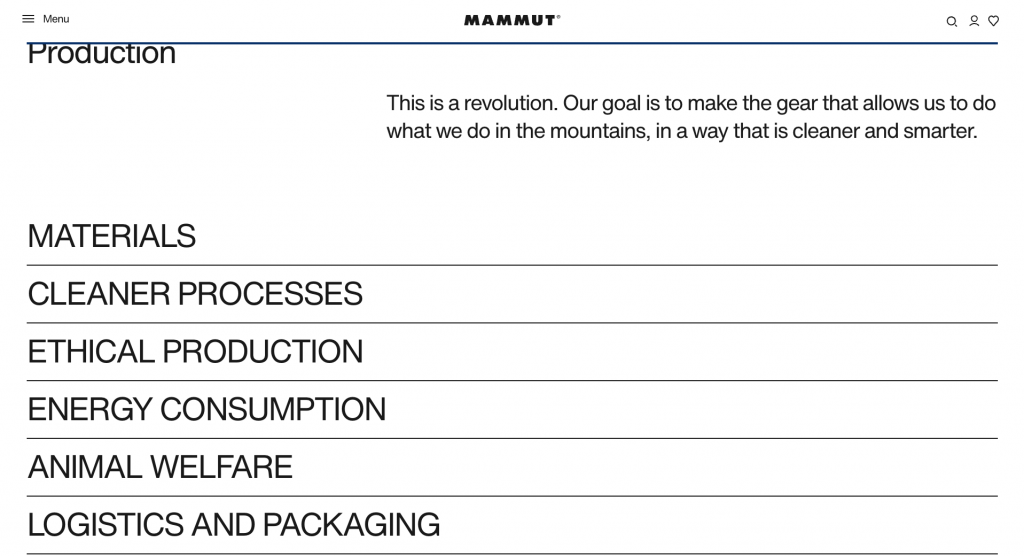
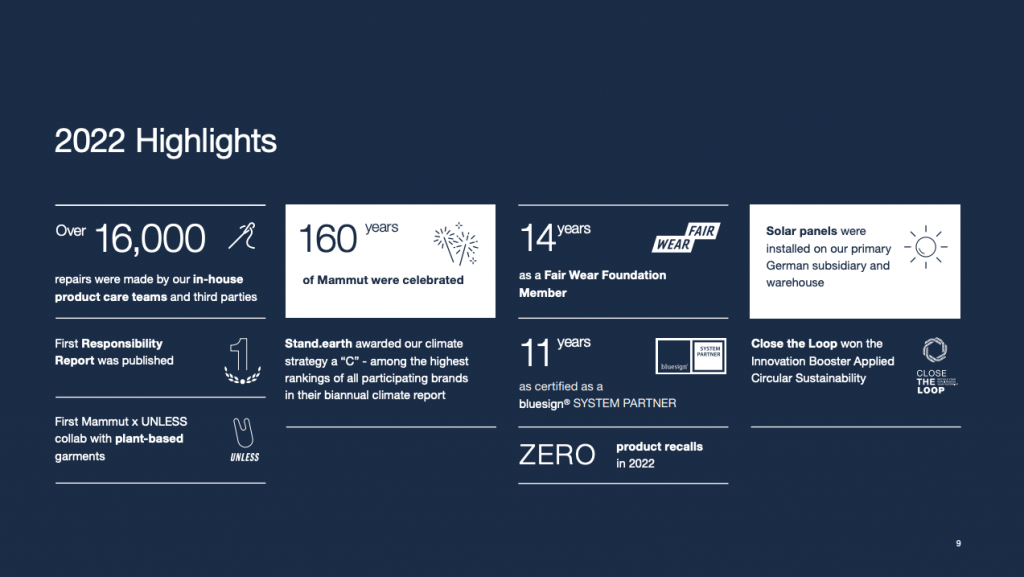
Many also publicize their annual sustainability reports, which outline the brand’s accomplishments over the past year and set clear, measurable goals for the future.
Landing pages for sustainable products
Sports clothing brands are increasingly creating dedicated landing pages for their sustainable product lines. They feature collections made from eco-friendly materials and detail the sustainable production processes behind each item.
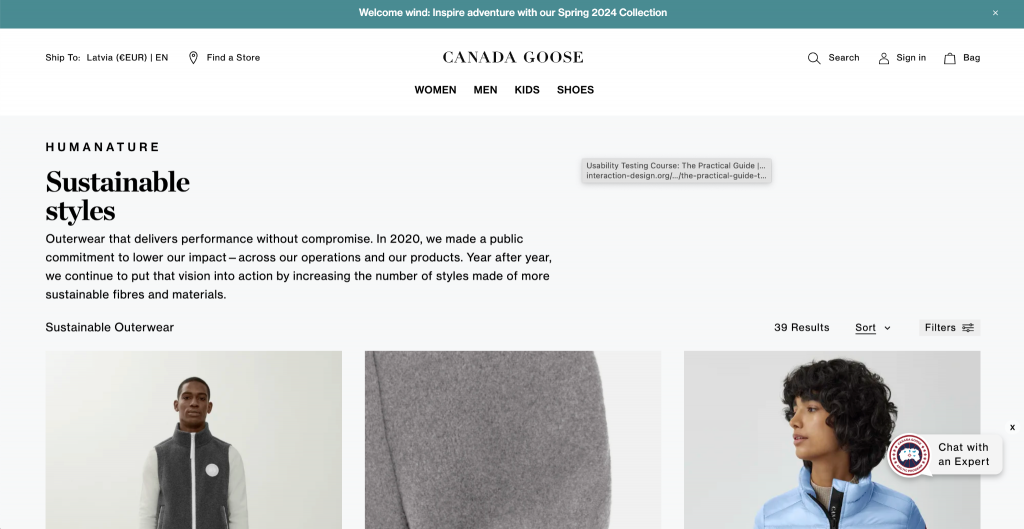
These product pages also educate users on the importance of these eco-friendly choices. Detailed descriptions explain the benefits of organic cotton, recycled polyester, and similar alternatives and the positive environmental impact of sustainable manufacturing practices.
Badges for sustainable products
To help consumers identify eco-friendly options, brands use badges to highlight sustainable products. Badges are prominently displayed on product listing pages (PLP) and product detail pages (PDP), signaling sustainable materials and practices.
Each badge provides clear information about the materials used so consumers can quickly recognize and make informed shopping decisions.
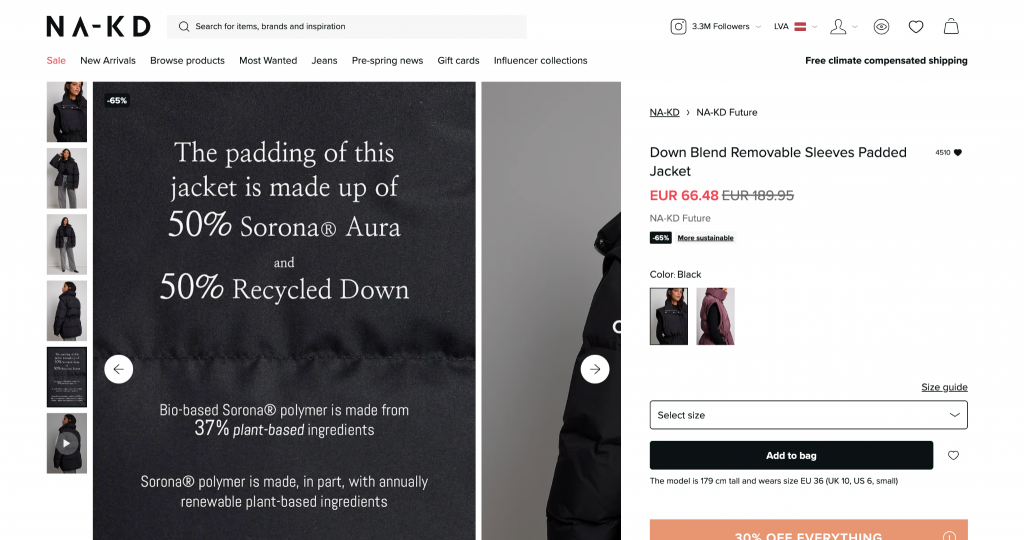
Collaboration with eco-conscious influencers
Partnering with influencers genuinely interested in sustainability, brands can effectively increase awareness of their sustainable initiatives among existing customers and attract new, eco-conscious consumers. Such collaborations often involve influencers sharing their experiences and highlighting the environmental benefits and quality of the items in an authentic and relatable way.
Collaboration with eco-friendly brands
Collaborating with other eco-friendly brands is another effective strategy for addressing consumer concerns about sustainability. For example, Salomon has partnered with Redeem Equipment, an upcycling brand that collects raw materials donated by individuals and industries to create new products.
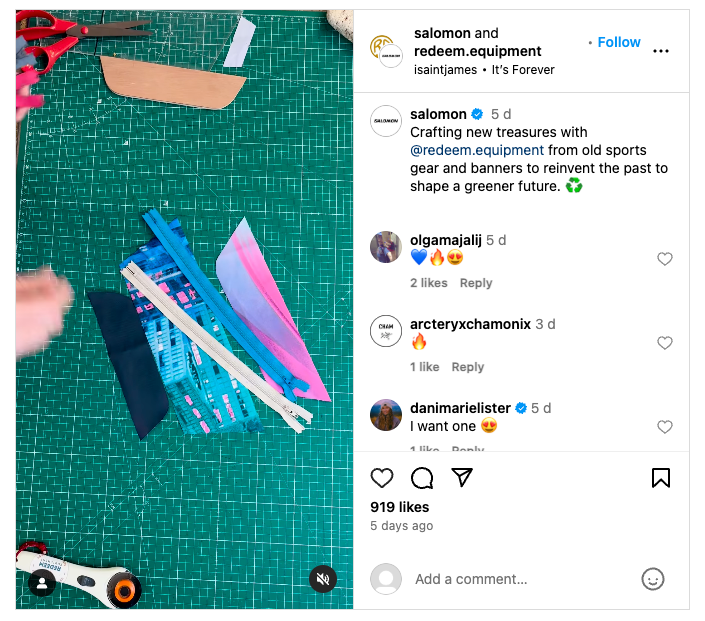
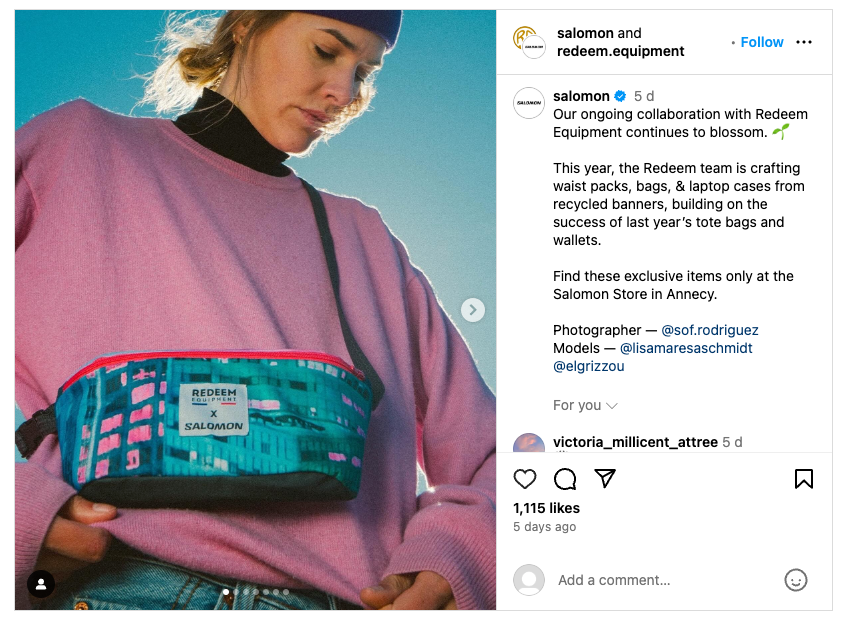
Through this collaboration, Redeem Equipment crafts waist packs, bags, and laptop cases from Salomon’s old sports gear and banners. This partnership helps reduce waste and highlights Salomon’s commitment to sustainability, appealing to eco-conscious customers and reinforcing the brand’s dedication to environmental responsibility.
Greener delivery
Adopting sustainable delivery methods can affect the price or speed of package delivery and cause customer dissatisfaction. It’s crucial to educate your customers about the benefits of greener delivery options and communicate a commitment to making better environmental choices so they can embrace the shift towards more sustainable delivery practices.

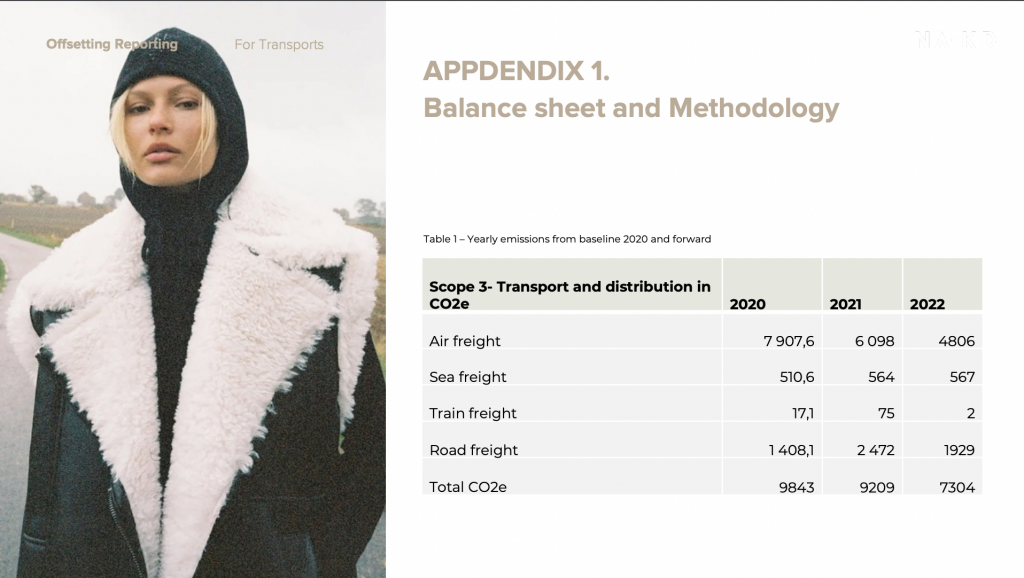
Sustainable packaging
One major concern for online shoppers is the excessive use of plastic packaging, especially when it is not recyclable. According to SendCloud research, 61% of online shoppers believe that too much packaging is used for goods.
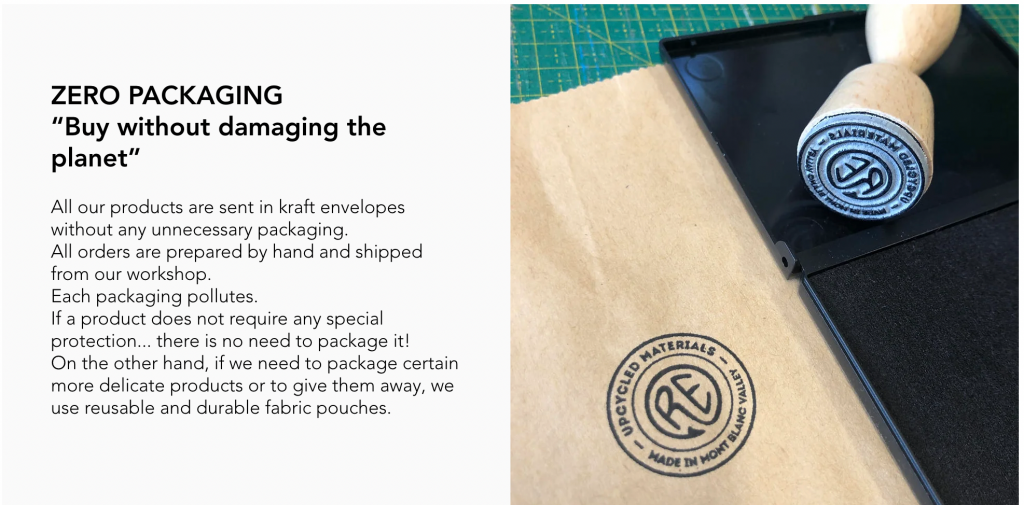
Sustainable packaging solutions include using recyclable or biodegradable materials and minimizing the overall amount of packaging used.
Educating users on sustainability
It takes two to make an impact, so it’s crucial to educate customers on how to make sustainable choices. Provide information and tips on eco-friendly practices to reinforce the commitment to sustainability, empower customers to contribute positively to the environment, and foster a community of informed, environmentally conscious consumers.
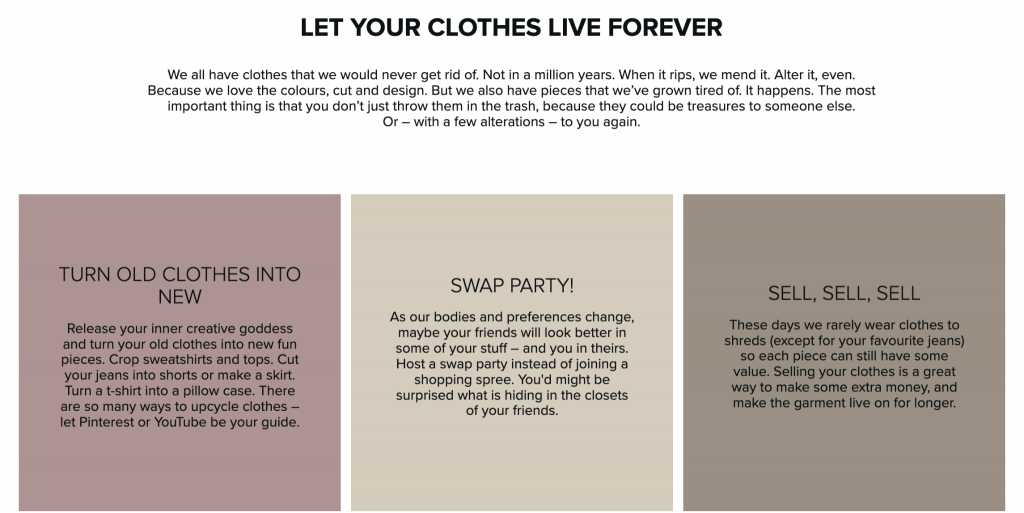
Selling damaged or used products
Brands can sell factory seconds, damaged returned products, or lightly used items on a dedicated landing page to reduce waste while providing consumers with wearable goods at a lower price point.
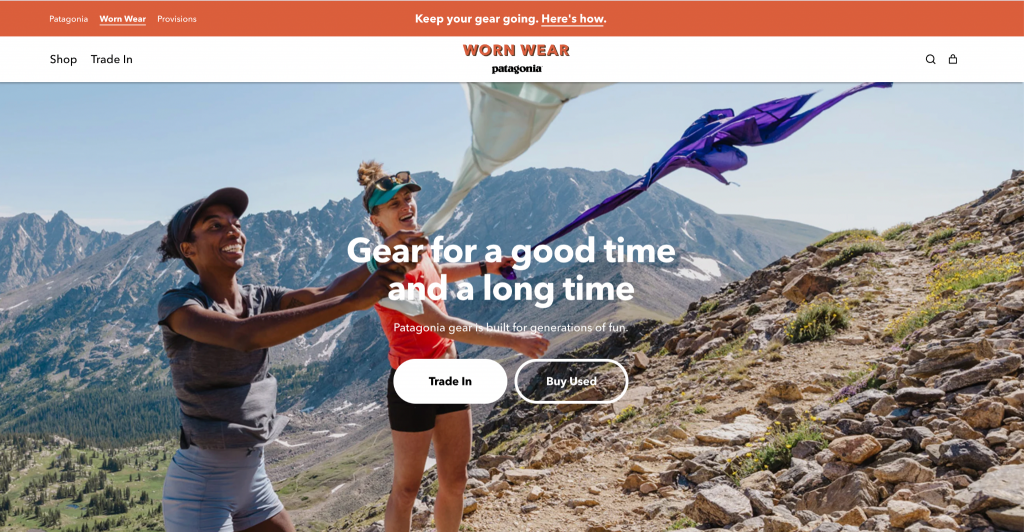
According to a Gitnux study, 42% of millennials and Gen Z respondents are likely to shop second-hand for items. By offering these products, brands can appeal to eco-conscious consumers and make a positive statement on sustainability.
Buy-back & return opportunities
Consider offering store credit, discounts, or simply accepting old gear for donation, encouraging customers to return used items instead of discarding them. Each of these options can help reduce waste and increase environmental awareness.

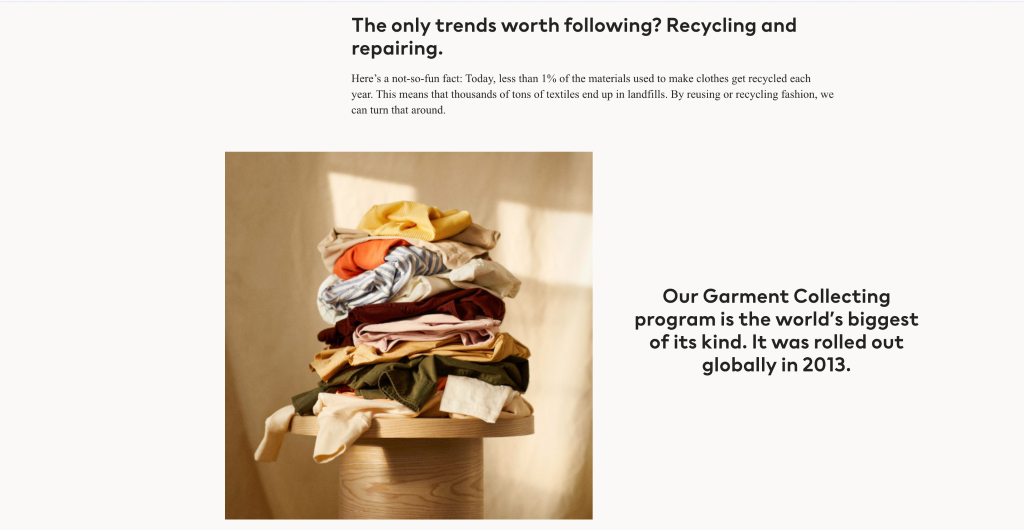
UX suggestions to highlight sustainability
To effectively highlight sustainability, start by integrating clear communication about your eco-friendly practices throughout the user journey, beginning with the homepage.
On the PLP, provide filters or dedicated sections for eco-friendly products to ensure that sustainable items are easy to find.
On PDPs, include sustainability claims and labels, offer transparency about the product’s origin, and provide tips on enhancing the items’ lifespan. Additionally, emphasize sustainable transportation options during checkout.
Continue reading for details on each of these suggestions!
Highlight your actions
Include a dedicated block on the homepage that showcases your brand’s attitude towards sustainability and a link that guides users to the landing page. This landing page should showcase the clear actions that have been taken and the brand’s future vision.
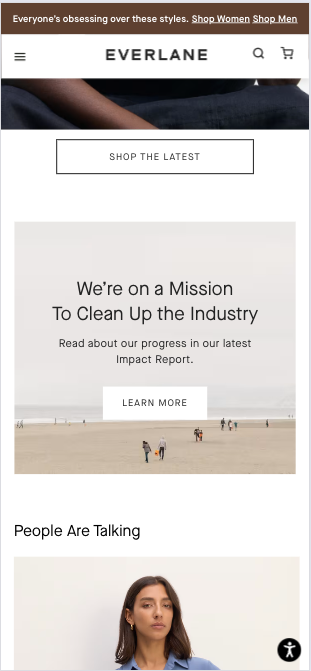
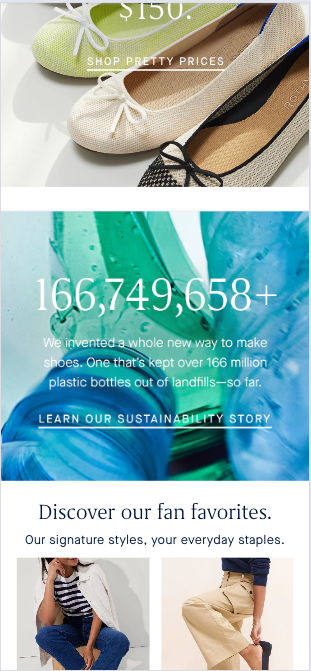
Ideas to display on the homepage
- Dedicated landing pages to yearly sustainability reports
- Workplace emissions
- Reduced carbon emissions relating to your supply change
- Waste recycled
- Recyclable packaging

Allow easy access to sustainable items
Give eco-conscious users a simple way to access and explore all the sustainable items.
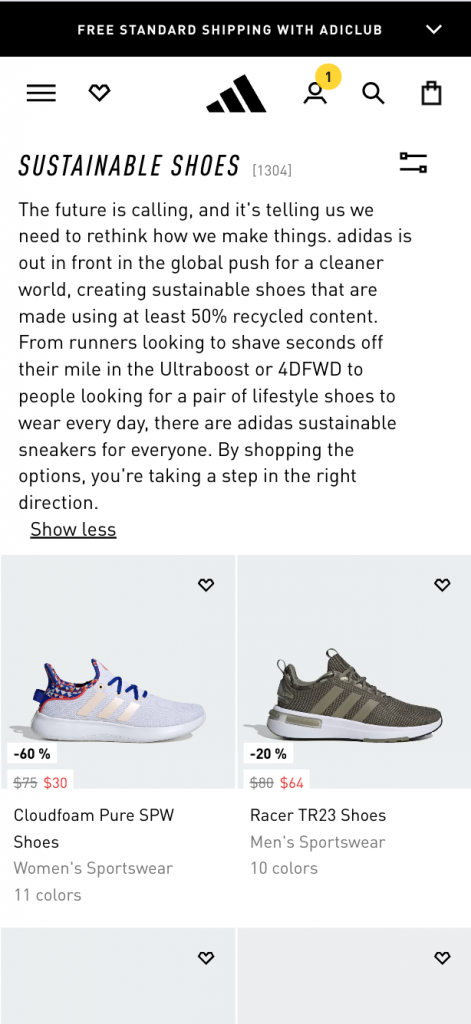
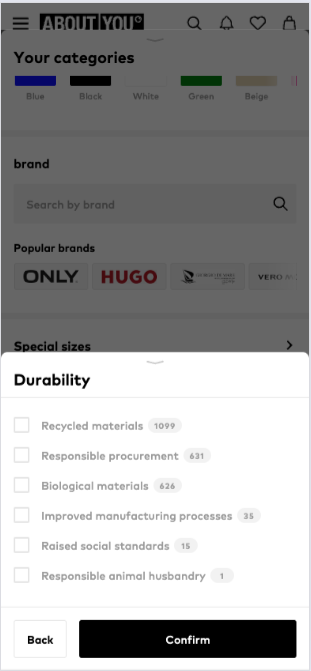
Ways to help users explore sustainable items
- If there are more than 50 items that can be considered more sustainable, create a separate category for them so people can easily access them
- Implement filters on all category pages and allow users to filter products by sustainability claims, such as recycled materials, improved manufacturing processes, raised social standards, etc.
Include sustainability claims and labels
Showing a badge with a tooltip or overlay allows skeptical or curious customers to dig deeper. By clicking on the interactive badges, customers can view the evidence behind product and brand-level claims or simply learn more about a specific claim or certification without removing them from the customer journey.
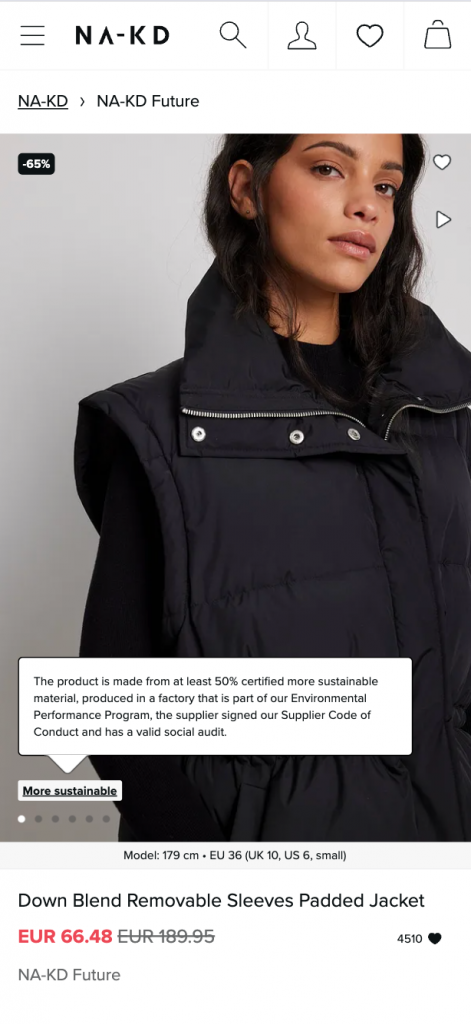
Ideas for sustainability labels
- Animal welfare—for leather and Merino wool products
- Cleaner chemistry—for products with incorporated bluesign®, GOTS, or GRS restricted-substance standards
- Renewed materials—for items manufactured with recycled materials
- Sustainable manufacturers—made with economically sound processes that minimize negative environmental impacts

Provide transparency of product origin
The future of brand transparency is likely to be characterized by greater openness, honesty, and accountability. Companies that are able to meet consumer demands for greater transparency will be more successful in building trust and loyalty.
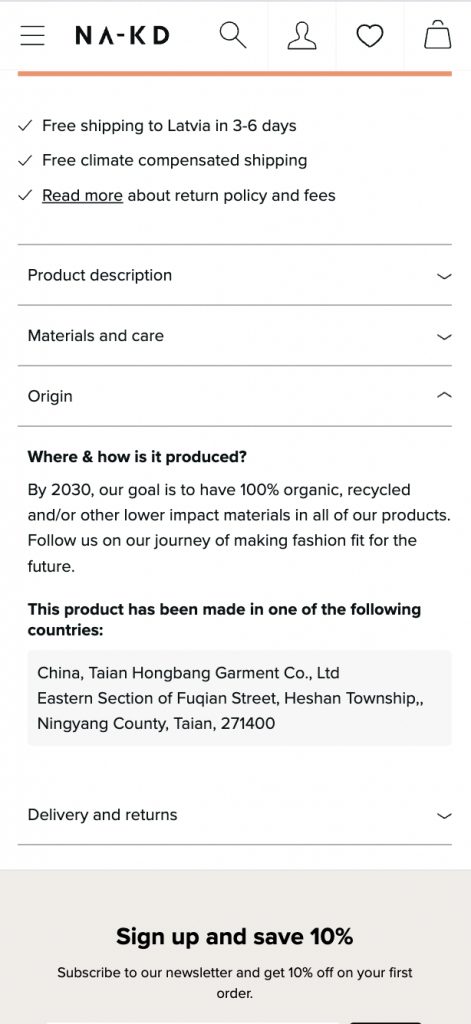
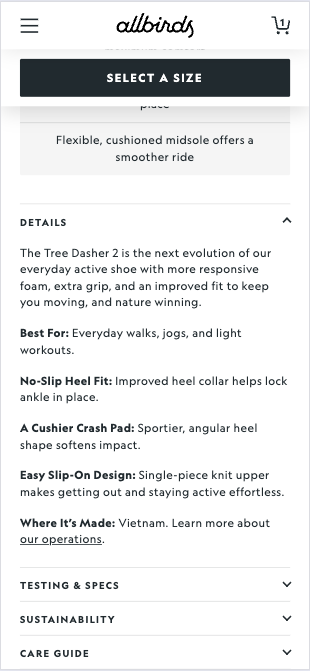
Ways to promote transparency
- Add a separate block within the product description that explains the brand’s sustainability principles in manufacturing, as well as displays the country in which the product is manufactured
- Add a link to a dedicated landing page that explains in detail the partnerships with brands, their values, and the actions they are taking.
Enhance the lifespan of the items
Provide care instructions to educate users on smart actions to make their items last longer. Even if users purchase new items later on, maintaining the quality of their products means that others may want to use them in the future, thereby reducing waste and extending the lifespan of the items.
Ways to implement care block
- Add a generic care information section within the product details block so users can easily access it even after they have purchased the product
- Consider implementing a dedicated care page to emphasize the importance of slow fashion and quality items with care information for each product type and highlighting its significance.
Emphasize sustainable transportation
Simple USPs for sustainability in the About Us section can seem like vague promises, which become more of a norm than anything that generates real value. Customers start to make purchasing decisions based on companies’ policies regarding sustainability, but they can now see through the greenwash quite easily. Thus, the sustainability topic is becoming more complex, and more significant effort is required to gain a competitive edge, especially in retail, where transportation leaves the biggest impact on the environment.
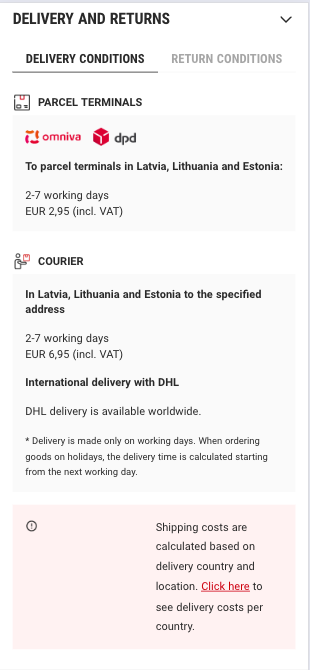
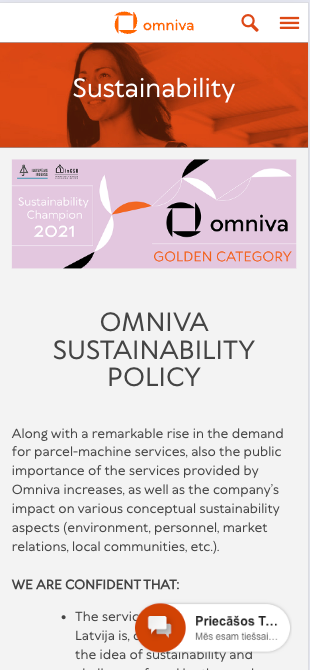
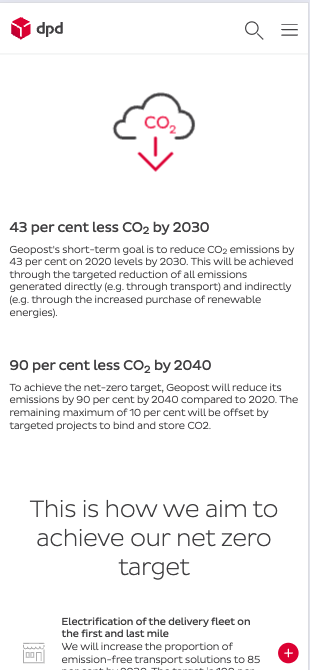
Ways to emphasize sustainable transportation
- Create a dedicated section on the sustainability page with value added from transportation partners
- Add additional information about emissions and the environmental impact of delivery types on the Delivery and Returns overlay on the PDP
- Promote in-store pick-up at checkout and on the Delivery and Returns overlay as the greenest method, and consider adding a checkbox option to opt out of using packaging.
Conclusion
Integrating sustainability into the user journey in sports clothing eCommerce and retail as a whole is no longer optional. As you address consumer concerns through transparent communication, educational initiatives, and innovative practices, you can effectively meet the growing demand for eco-friendly products.
Before kicking off your sustainability concept, ask yourself: what sustainable values do we want to support? Define your brand mission for sustainable practices. Consider what actions you can take today and identify which brands or products will help bring your concept to life. Finally, think about how you will reward customers for supporting your mission.
With dedicated sustainability pages, user-friendly browsing and decision-making experiences, and incentives encouraging sustainable practices, brands can build a loyal customer base that values environmental responsibility.
Ready to create a compelling and impactful sustainability strategy? Use the form below to contact our UX experts and learn how we can help you integrate effective sustainability practices into your user journey and build lasting connections with eco-conscious customers.


Share on: